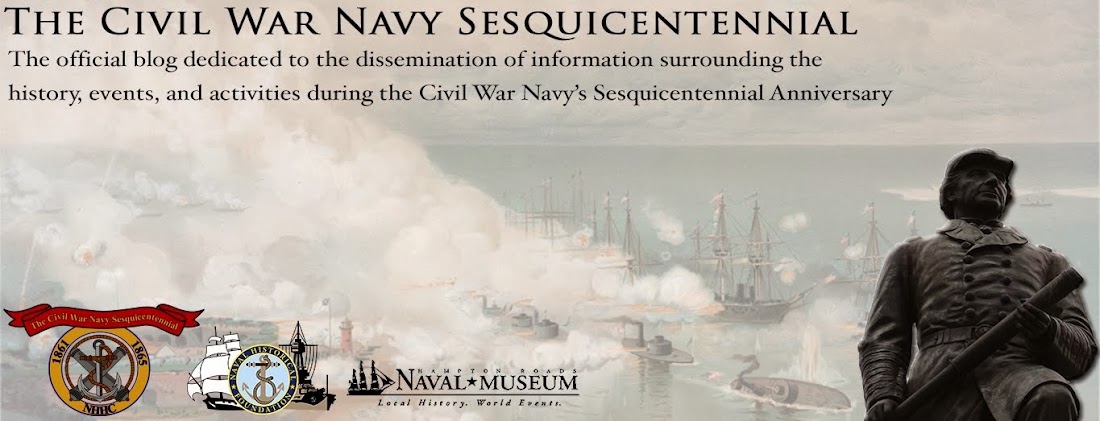At the beginning of the Civil War, most Navy ships (both US and CS) stocked the Ames model 1841 Navy cutlass in their small arms locker (also sometimes listed as the M1842 cutlass). Somewhat resembling an old Roman broadsword, it was a heavy weapon with a 21” straight double-edged blade and a total length of about 26”. It had a brass strap as a knuckle guard and was sheathed in a black leather scabbard with brass tip. It has been described as “unwieldy”, probably because of its weight.
Semi-circular rack of M1841 cutlasses on the bulkhead of the USS Water Witch at the Port Columbus Museum of Civil War Naval History:

In 1860, the Navy contracted with Ames to produce the model 1861 cutlass (I have also seen it referred to as the M1860 cutlass). These were patterned after the French naval cutlass. This weapon was 32” in total length with a 26” single-edge curved blade and a more substantial brass knuckle guard. It was also sheathed in a black leather scabbard with brass tip. This was a superior weapon to the M1841, and during the war 25,000 of these were purchased by the US Navy. The cutlass saw service on both sides during the CW. The weapon remained in use in the USN through the Spanish-American War and WW1 and a few M1861 cutlasses could still be found on USN ships at the beginning of WW2, largely for traditional purposes.
M1861 Cutlass and scabbard:
The cutlass is a close-range weapon, used for defense of the ship (“repel boarders”) or for boarding and capturing the crew of enemy ships as a prize. Photos of sailors at gun drill show the gun crews armed with pistol and cutlass for defense against boarders.
Gun drill (possibly USS Miami); note sailors center-right (bending over with big wrench) and standing on the gunwale (far right) wearing pistols, cartridge boxes and M1861 cutlasses (source NHHC on-line photo archives):

Sailors would drill with single sticks on a regular basis to learn how to wield the cutlass in hand-to-hand combat; sometimes for up to 2 hrs.
Another edged weapon which saw occasional use by USN sailors in the CW was the Dahlgren bayonet or bowie knife:
Dahlgren designed this knife to be fitted as a bayonet on a .69 caliber Plymouth-style musket he also designed. It had a 12”, Bowie-style blade. I have found mixed evidence regarding the USN adopting his musket for widespread use, but it appears that at least 500 Dahlgren knives were separately ordered by the Navy and some sailors may have preferred using those rather than the M1861 cutlass.
With the eventual phasing out of the practice of capturing ships for prize money, and the more advanced weaponry with greater killing power at longer range, the pistol and cutlass were rapidly becoming obsolete by the end of the Civil War. According to the NHHC web site, the last time a bluejacket swung a cutlass in combat is unknown. It was officially declared an obsolete weapon by Naval Order in 1949.
Photos of 1841 and 1861 cutlasses (good comparison) can be viewed at: http://www.oregonknifeclub.org/Newsletter%200911.pdf and also in McAulay, John D. Civil War Small Arms of the U.S. Navy and Marine Corps. 1999. Andrew Mowbray Publishers, Lincoln, RI.

The M1861cutlass pictured is a reproduction. The scabbard for the original was quite different. It was a single piece of leather closed on the back by 39 copper rivets, the final rivet being of larger size and passing through to the front. It also had a brass knob on the top front to fit a frog. There was no metal throat or tip.
ReplyDelete